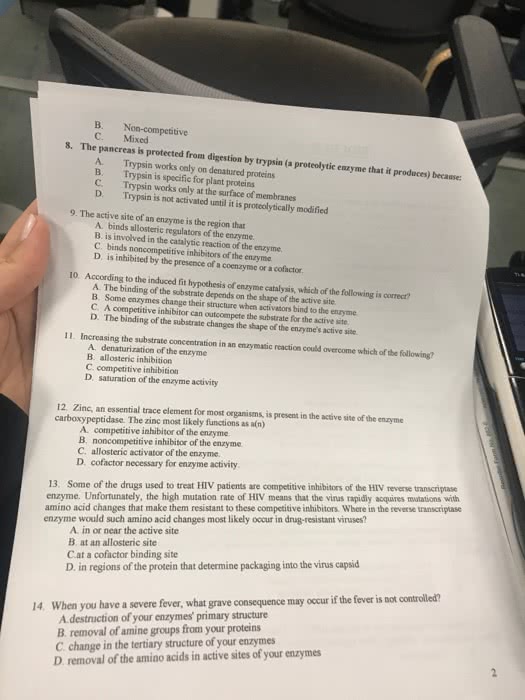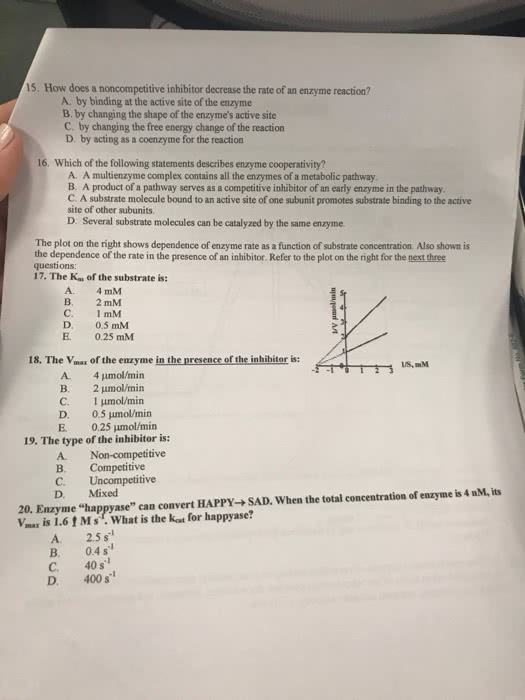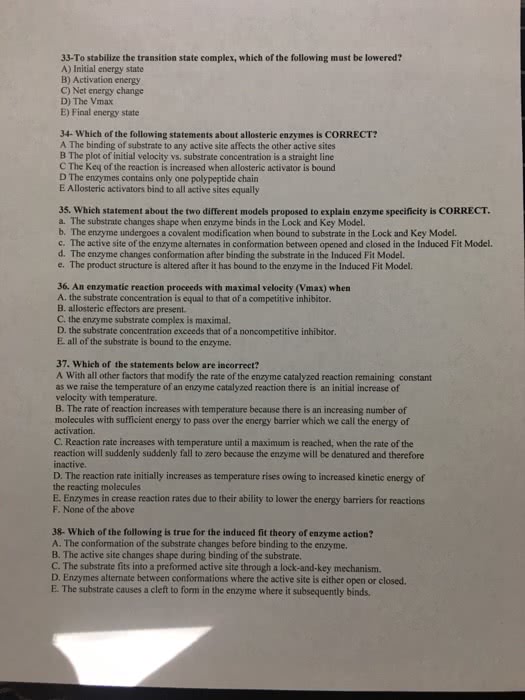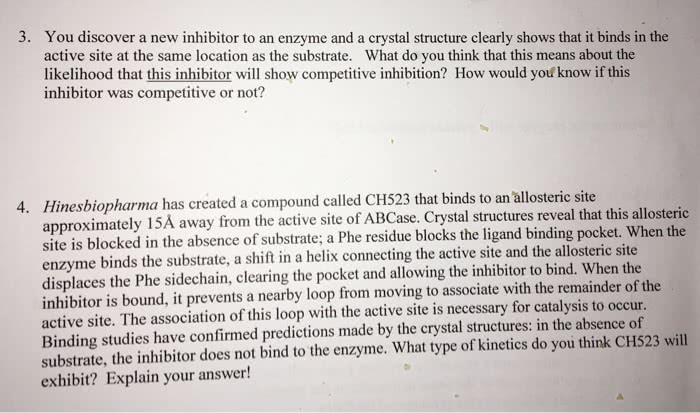CHE 211 Study Guide - Final Guide: Enzyme Inhibitor, Enzyme Catalysis, Phosphofructokinase

Organic Chemistry 2: Enzymes
Regulation of Enzyme Activity
► One of the major ways that enzymes differ from nonbiological catalysts is in the
regulation of biological catalysts by cells
► In the enzyme catalyzed reactions, compounds are only produced in the amounts and
the times they are needed in the cell this means that the rate of the catalyzed
reaction must be controlled somehow, so it can speed up when more compound is
needed and slow down when the compound is not needed or an accumulation of that
compound occurs
► Some methods that organisms use to regulate enzyme activity are:
1) Produce the enzyme only when the substrate is present – common in bacteria
2) Allosteric enzymes
3) Feedback inhibition
4) Protein modification
5) Proenzymes
Allosteric Enzymes
▪ These enzymes have an enzyme effector binding site and an active site; effector binding
site changes the shape of the active site this can either lead to making the active site
of the enzyme active or inactive
▪ When an effector binding renders the enzyme inactive, this is called negative allosterism
▪ When the effector binding renders the enzyme active, this is called positive allosterism
▪ Effector molecules change the activity of an enzyme by binding at a second site
o Some effectors speed up enzyme action (positive allosterism)
o Some effectors slow enzyme action (negative allosterism)
o In either case, binding of the effector molecule, which is a small molecule that
regulates enzyme activity by determining whether it will be active or inactive
find more resources at oneclass.com
find more resources at oneclass.com
Document Summary
One of the major ways that enzymes differ from nonbiological catalysts is in the regulation of biological catalysts by cells. Some methods that organisms use to regulate enzyme activity are: produce the enzyme only when the substrate is present common in bacteria, allosteric enzymes, feedback inhibition, protein modification, proenzymes. In either case, binding of the effector molecule, which is a small molecule that regulates enzyme activity by determining whether it will be active or inactive. The picture above shows us both positive allosterism (a & b) and negative allosterism (c & d) Allosteric enzymes are the basis for feedback inhibition or feedback control. Feedback inhibition is the process by which excess product of a biosynthetic pathway turns off the entire pathway for its own synthesis the pathway of enzymes involved in the formation of biological molecules can be shown below.




